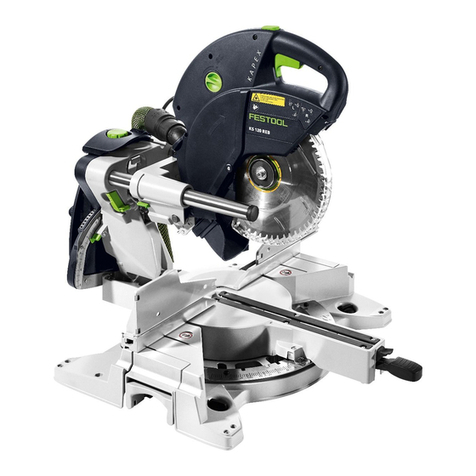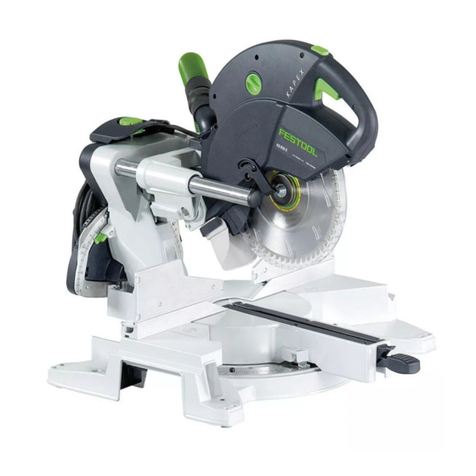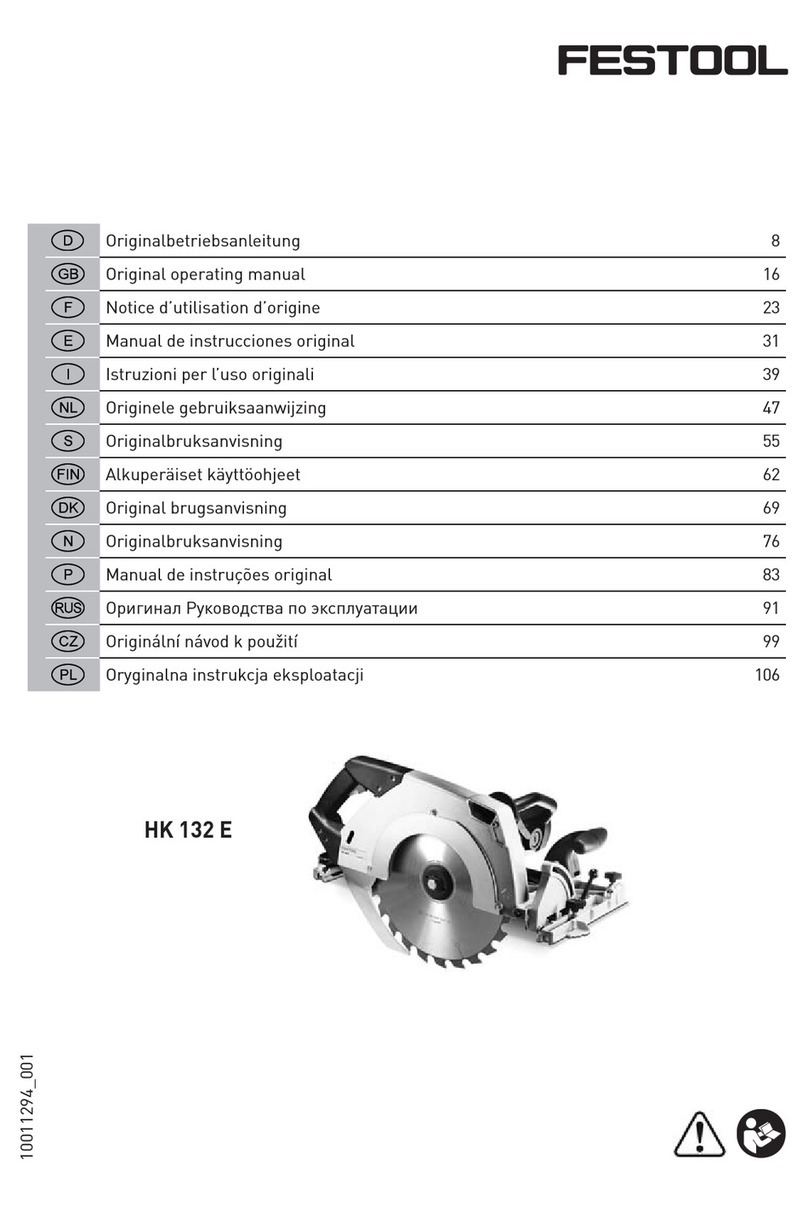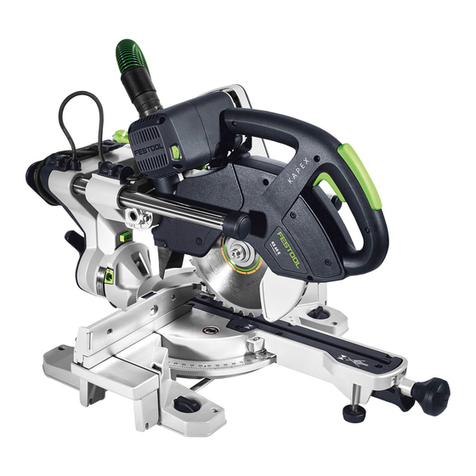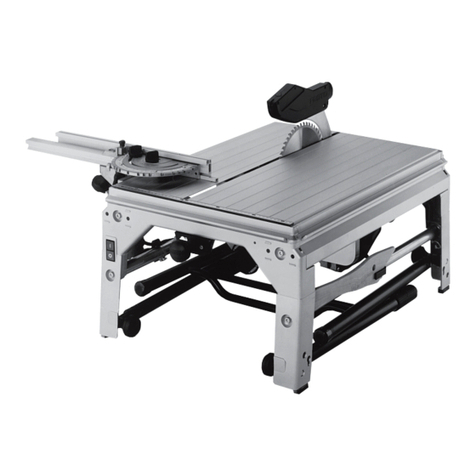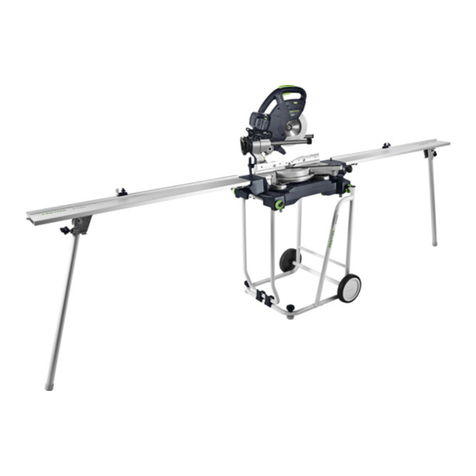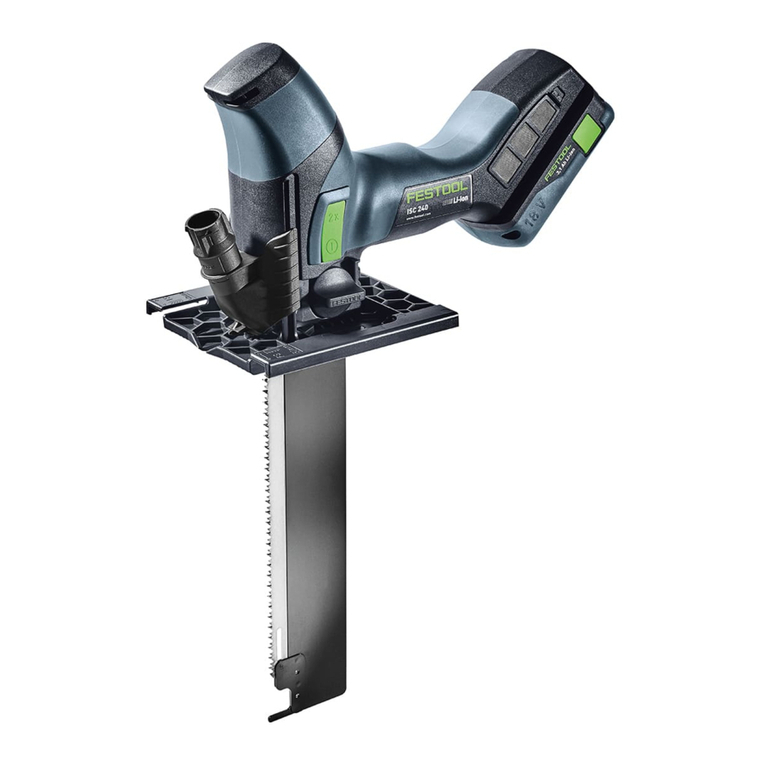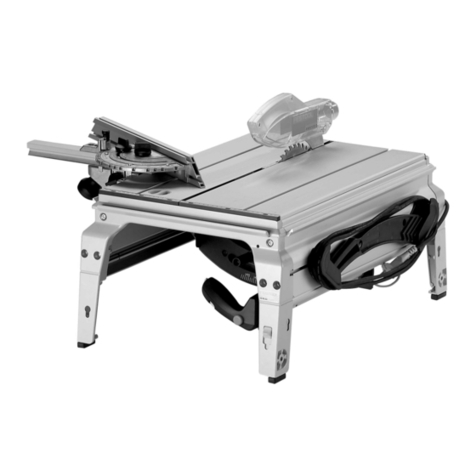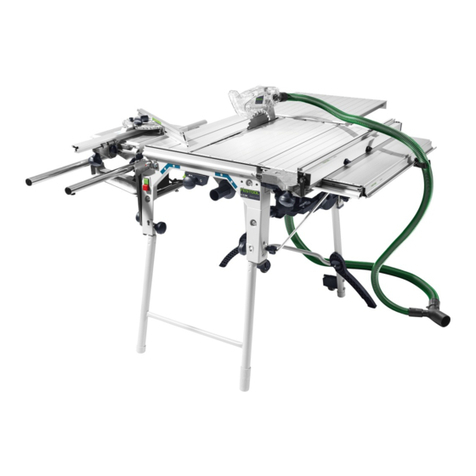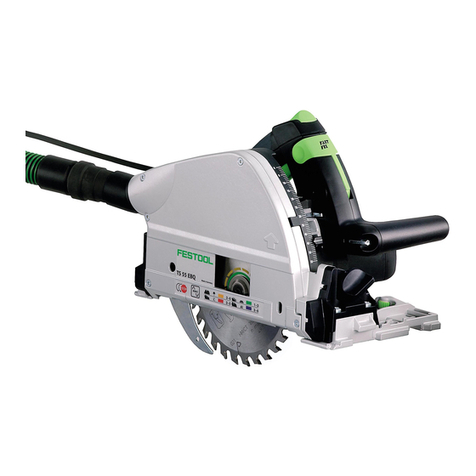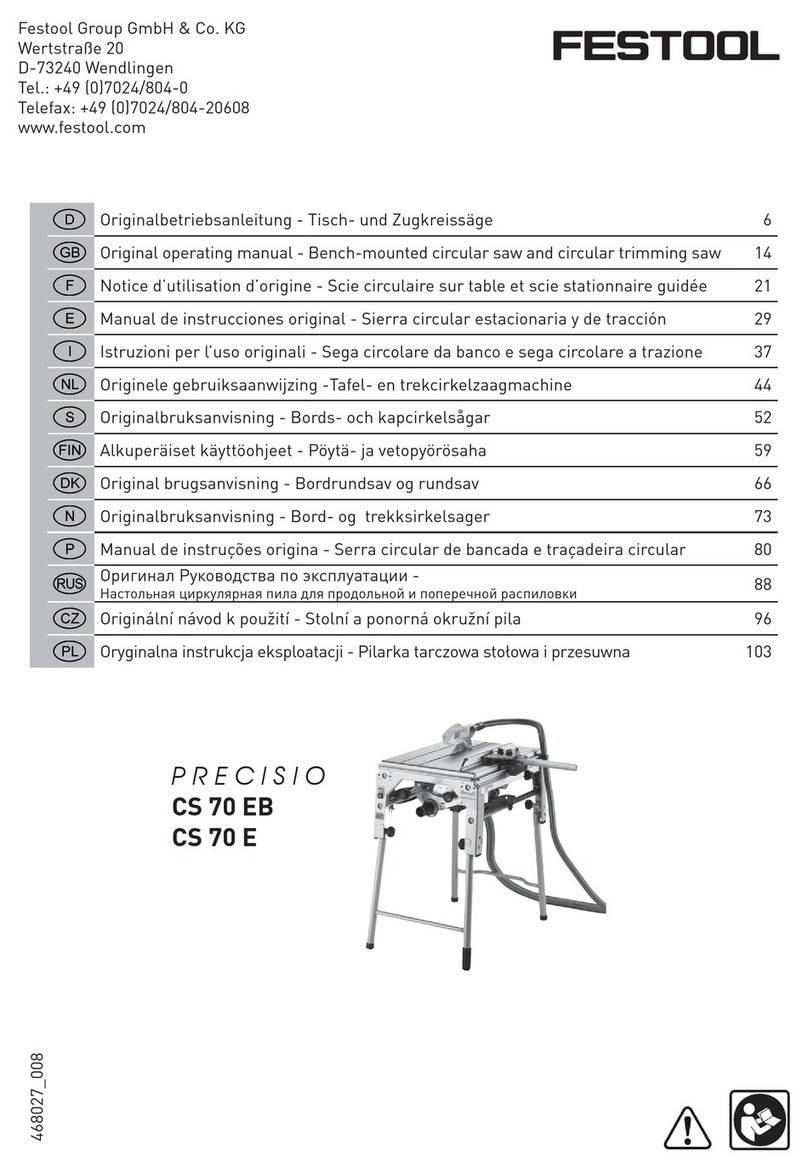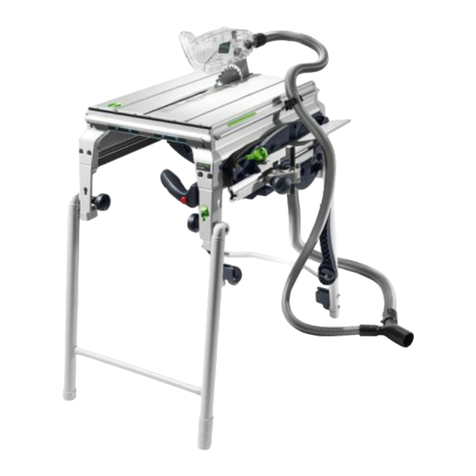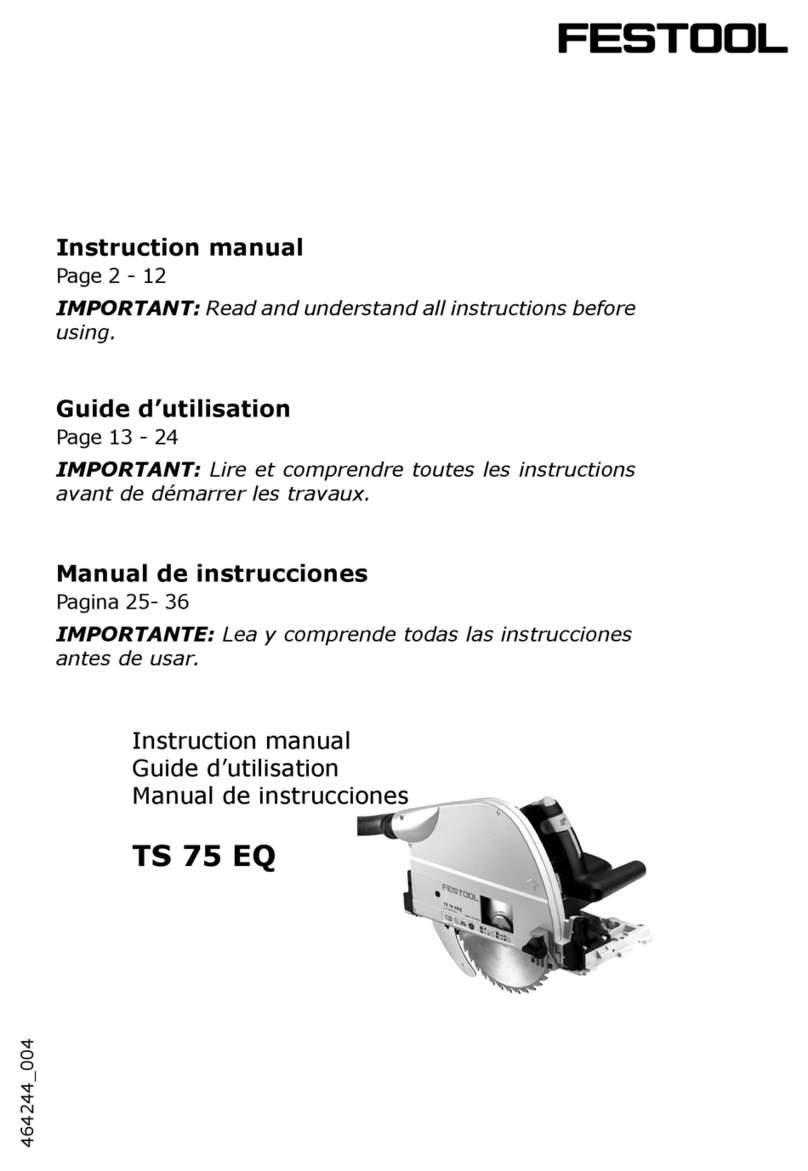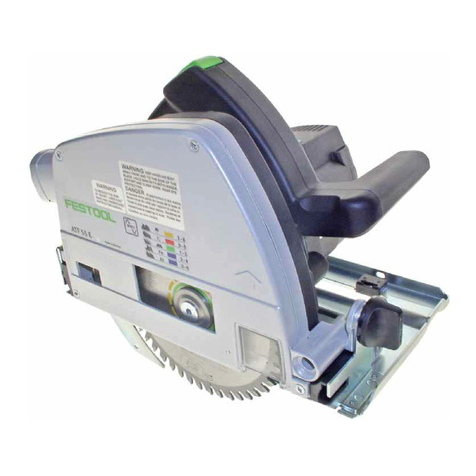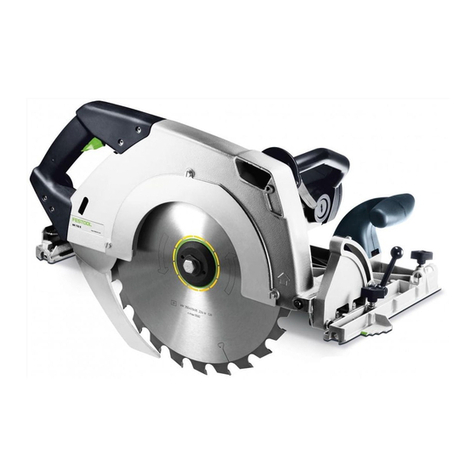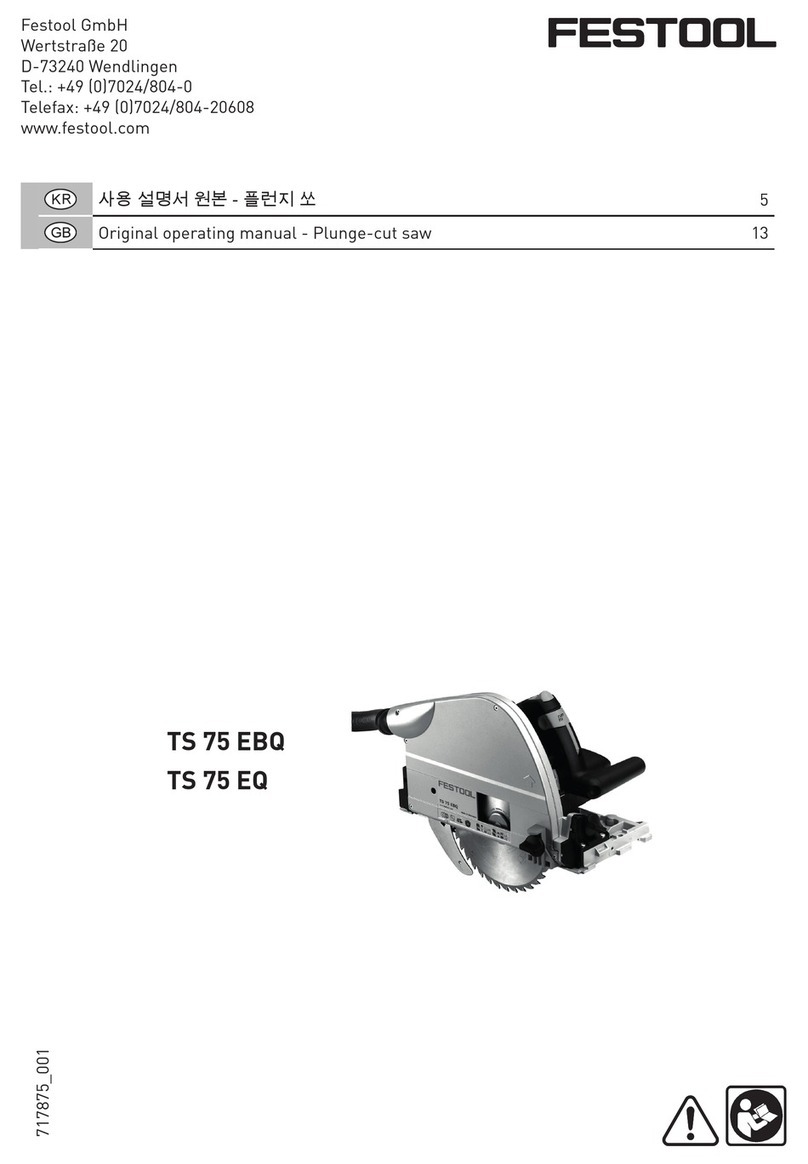
6
Assembly instructions Compact CS70
Accessories
1Extension table CS 70 VB
2Extension table CS 70 VL
3Ripping-cut fence CS 70 LA
1Extension table CS 70 VB (1.1)
The extension table CS 70 VB can be fitted to
the base table to enable exact cuts with a stop
up to a cutting width of 680 mm.
The saw table is widened by 405 mm if an
extension table is fitted on a long side of the
table (usually the right).
Proceed as follows (Fig. 2):
Unfold supports (2.5) at a 90° angle to the
table top.
Turn rotary knobs (2.8) fully to the left.
Place the outer edge of the extension table
on the edge of the base table in a slightly
raised position (Fig. 2).
Lower extension table so that the peripheral
clamping edge (2.4) lies between the profile
edge (2.7) and clamping plate (2.7).
Insert the end of the front support (2.2) into
the slot (2.1) in the table frame, push down
and tighten with knurled nut (2.3).
Suspend rear support in slot. Push extension
table down and tighten rear knurled nut.
Adjust exact height. Place guide stop on base
table up to saw blade.
Adjust height of extension table to same
height as base table with screwdriver at the
adjusting screws (4.8).
Attention! Do not align with outer edge of
table since this may be 0.2-0.3 mm below
the rest of the table.
Fit angle fence (1.4) centrally over joint
between base table and extension table so
that when the fence is clamped the extension
table is aligned with the edge of the base
table.
Tighten front rotary knob (2.8).
Push extension table down on joint at rear
and tighten rear rotary knob.
Screw in adjusting screw (2.10) fully with
screw-driver. If the extension table is
removed and then re-mounted it must be
pushed back against this stop (adjusting
screw).
This fixation means that it no longer has to
be aligned with the angle fence.
Check that the extension table is exactly level
with the base table using the guide stop.
The flatness of the base table can be adjusted
by adjusting the fastening (2.6).
To enable the angle fence and ripping-cut fence
to be adjusted according to the existing scale,
the scale of the extension table must be fitted
directly onto the base tables scale (Fig. 4).
Proceed as follows:
Release the fastening bolts (4.11) for the
extension tables scale.
Slide scale to base table scale.
Re-tighten fastening bolts.
2Extension table CS 70 VL (1.2)
The extension table CS 70 VL can be mounted
on the rear of the CS 70 EB to provide a safe
support when sawing longer work pieces.
The saw table is thus extended by 530 mm.
Proceed as follows (Fig. 3):
Mount left and right fitting angle (3.6) to rear
of frame with enclosed bolts, square nuts and
washers. Only slightly tighten the bolts (3.10).
If a CS 70 ST sliding table is already fitted the
fitting angle for the extension table is placed
on the fitting angle for the sliding table on
the side of the sliding table and both fitting
angles fastened together (on top of one
another).
The enclosed 4 mm washer then has to be
inserted beneath the fitting angle on the other
side.
Unfold supports (3.4) at a 90° angle to the
tabletop.
Release left and right rotary knobs (3.8) by
approx. 3-4 rotations (turn anti-clockwise).
Suspend the extension table by the threaded
bolts of the rotary knobs (3.8) in the slots
(3.9) on the fitting angle in a slightly raised
position.
The fitting angle hereby lies between the
rotary knob (3.8) and bow (3.7).
Lower the extension table onto roughly the
same level as the saw table and insert the
end of the support (3.2) into the slot (3.1)
in the table frame, press down and fasten
with knurled nut (3.3).
Push extension table onto roughly the same
level as the saw table and fasten with left
and right rotary knobs (3.8). The threaded
bolts should hereby rest on the base of the
slots.
Align extension table so that it is approx. 0.3-
0.5 mm lower than the base table at the
direct joint (check by laying the stop guide
on the base table).
Fasten fitting angle with bolts (3.10).
Check that the entire surface of the extension
is flat with the stop guide.
Adjust at the fastenings (3.5).
Folding away the extension table:
Release rotary knobs (3.8).
Loosen knurled nuts (3.3).
Slightly raise the rear of the extension table
and remove ends of supports from slots.
Fold supports in crosswise.
Fold down extension table.
